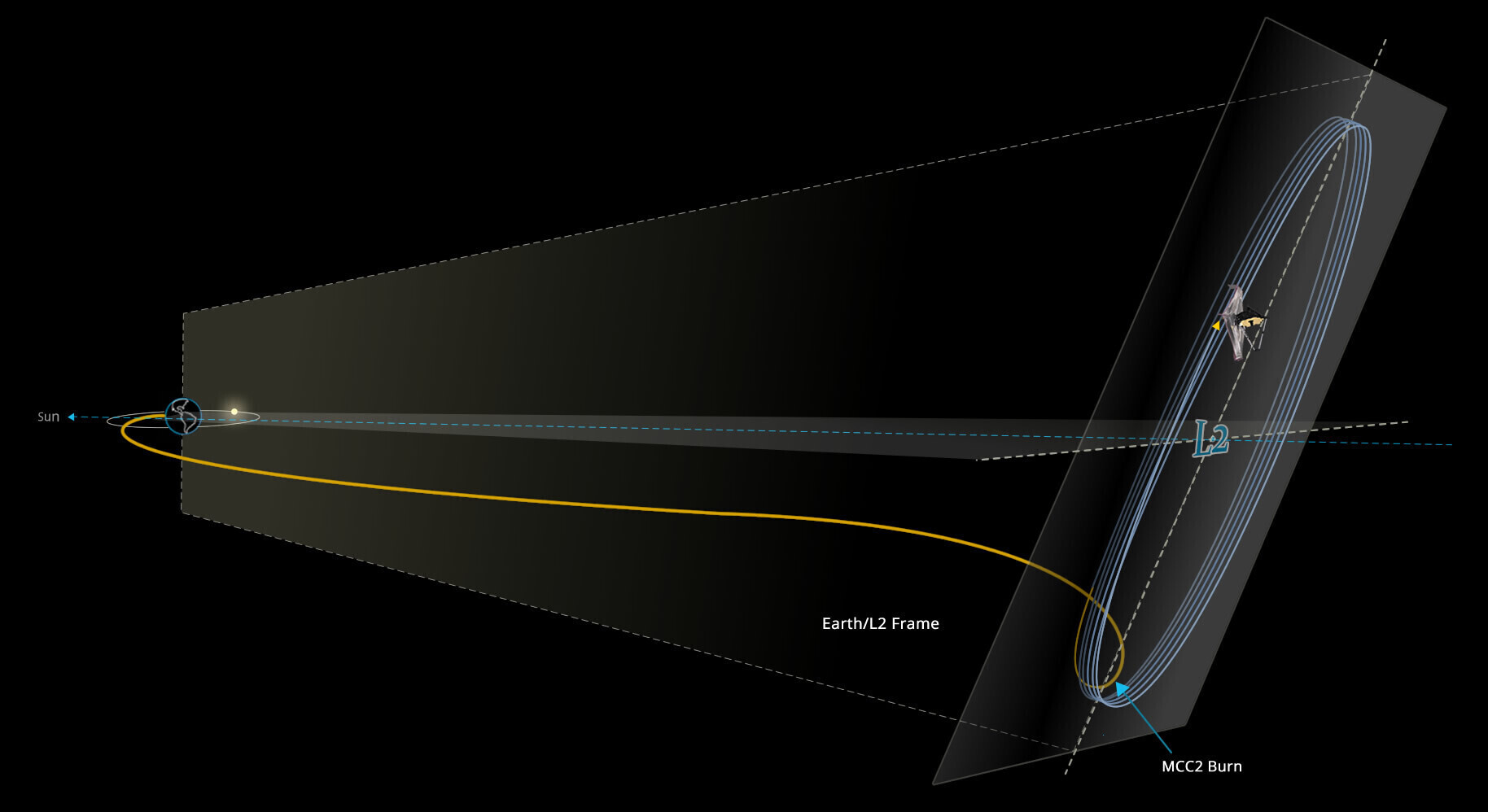It’s been a very long road for the James Webb space telescope. Following several delays, the mission to get it up into space finally succeeded. Even then it was still possible for things to go wrong, but that list of potential hazards just got shorter.
NASA has confirmed that James Web has settled into its orbit at L2, the second Lagrange point between Earth and the Sun. This follows its final 297-second course correction burn that placed the object into its desired orbit.
Nice burn, James Webb

The almost five-minute-long burn added just 5.8km/h to Webb’s overall speed. This was enough to drop the telescope exactly where NASA wanted it, 1.5 million kilometres away. It’s a bit like parallel-parking a car on the moon while looking at it from your backyard on Earth.
Its position at L2 was carefully chosen. It’ll be cold enough to operate at maximum efficiency while being shielded from the Sun. By its massive Sun shield, naturally. Its position gives it almost uninterrupted views of space, while the gravitation pull of our planet and the Sun should hold it (mostly) in place. Only minor corrections should be needed over the coming years — until Webb’s fuel runs out, that is.
NASA Administrator Bill Nelson said, “Congratulations to the team for all of their hard work ensuring Webb’s safe arrival at L2 today. We’re one step closer to uncovering the mysteries of the universe. And I can’t wait to see Webb’s first new views of the universe this summer!”
Summer, of course, is winter here at home. In other words, there are still a few months before the James Webb space telescope begins to do its work. According to Bill Ochs, Webb project manager at NASA’s Goddard Space Flight Center, there’s still “aligning the mirrors, instrument activation and commissioning” to complete before “the start of wondrous and astonishing discoveries”.